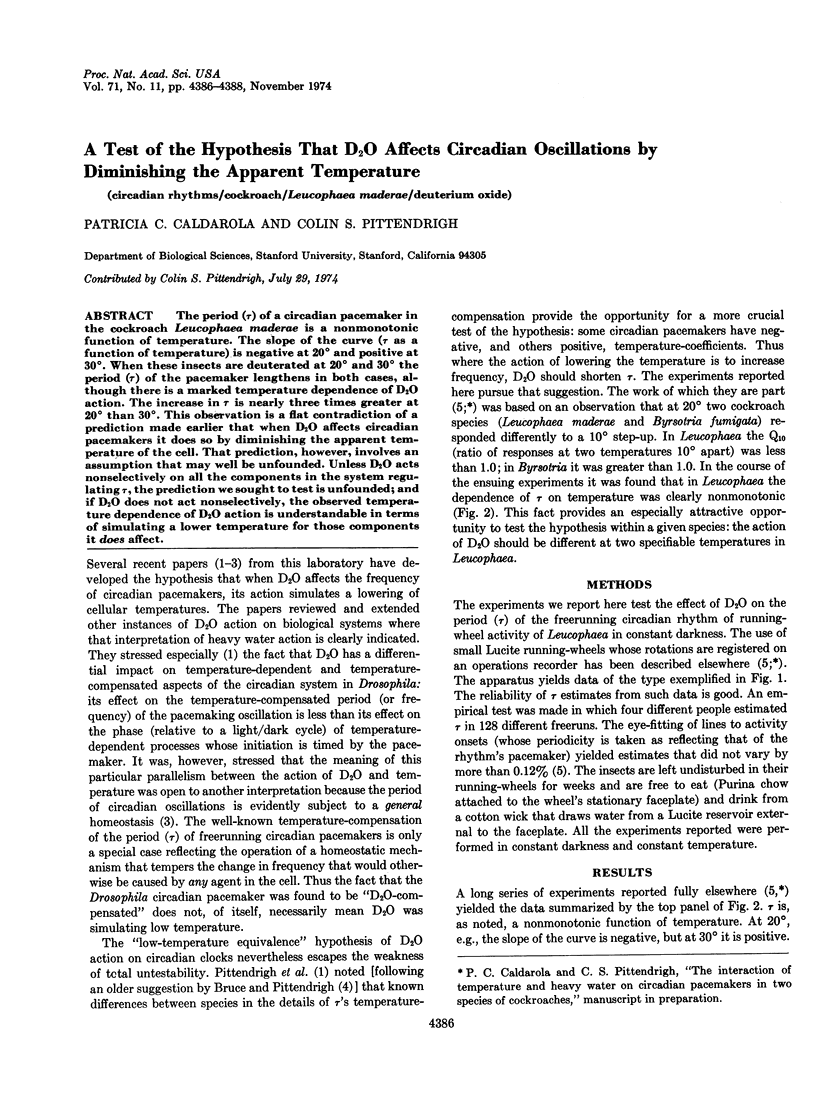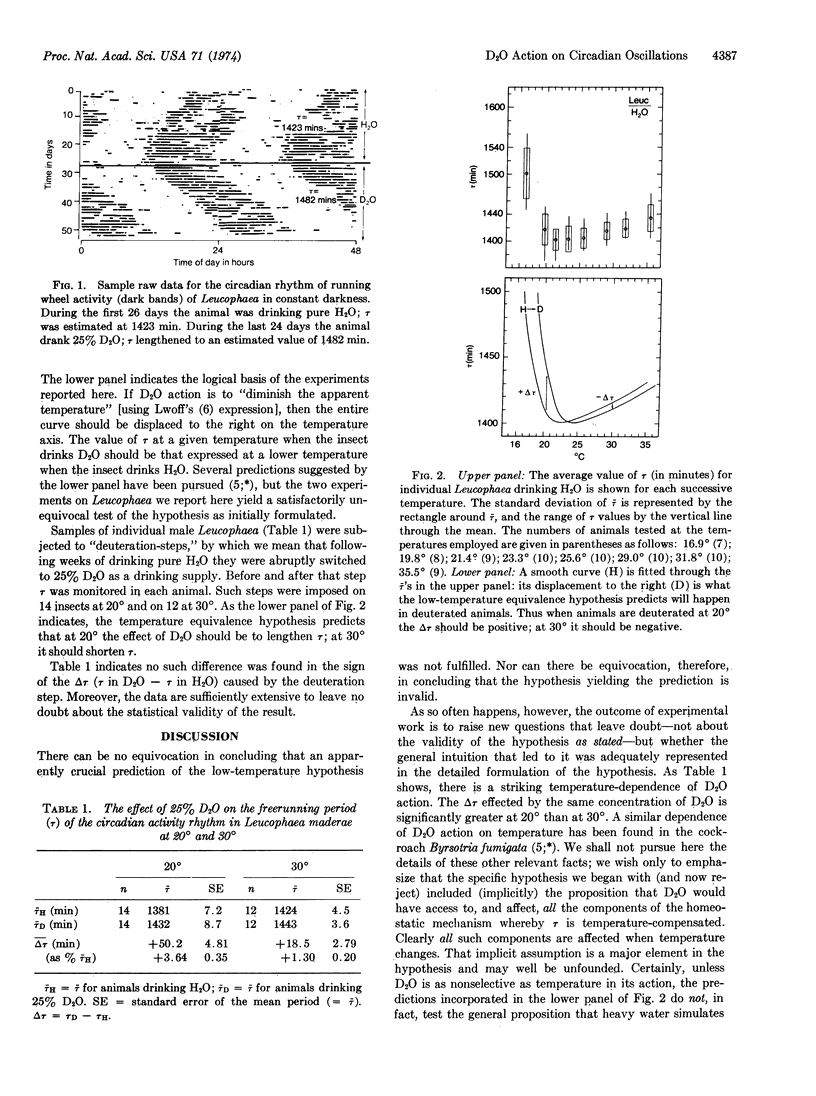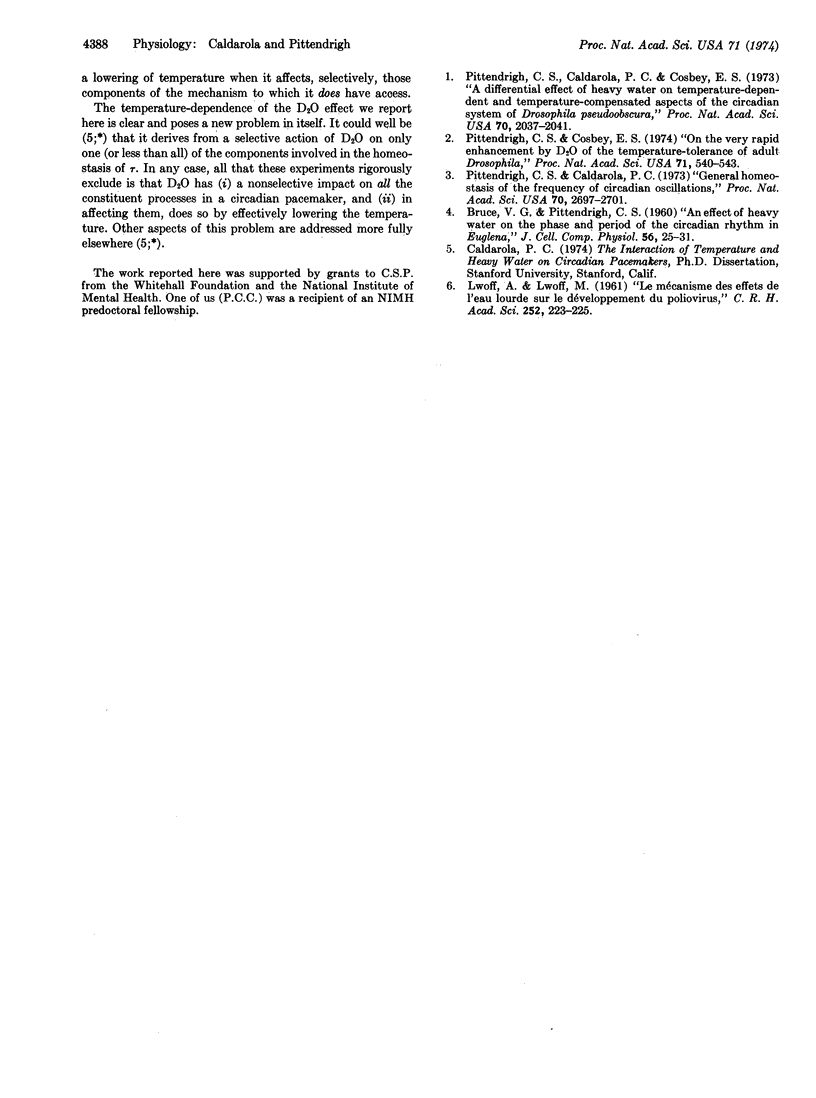Abstract
The period (τ) of a circadian pacemaker in the cockroach Leucophaea maderae is a nonmonotonic function of temperature. The slope of the curve (τ as a function of temperature) is negative at 20° and positive at 30°. When these insects are deuterated at 20° and 30° the period (τ) of the pacemaker lengthens in both cases, although there is a marked temperature dependence of D2O action. The increase in τ is nearly three times greater at 20° than 30°. This observation is a flat contradiction of a prediction made earlier that when D2O affects circadian pacemakers it does so by diminishing the apparent temperature of the cell. That prediction, however, involves an assumption that may well be unfounded. Unless D2O acts nonselectively on all the components in the system regulating τ, the prediction we sought to test is unfounded; and if D2O does not act nonselectively, the observed temperature dependence of D2O action is understandable in terms of simulating a lower temperature for those components it does affect.
Keywords: circadian rhythms, cockroach, Leucophaea maderae, deuterium oxide
Full text
PDF


Images in this article
Selected References
These references are in PubMed. This may not be the complete list of references from this article.
- LWOFF A., LWOFF M. [Effects of heavy water on the development of poliovirus as a function of temperature]. C R Hebd Seances Acad Sci. 1961 Jan 4;252:223–225. [PubMed] [Google Scholar]
- Pittendrigh C. S., Caldarola P. C., Cosbey E. S. A differential effect of heavy water on temperature-dependent and temperature-compensated aspects of circadian system of Drosophila pseudoobscura. Proc Natl Acad Sci U S A. 1973 Jul;70(7):2037–2041. doi: 10.1073/pnas.70.7.2037. [DOI] [PMC free article] [PubMed] [Google Scholar]
- Pittendrigh C. S., Caldarola P. C. General homeostasis of the frequency of circadian oscillations. Proc Natl Acad Sci U S A. 1973 Sep;70(9):2697–2701. doi: 10.1073/pnas.70.9.2697. [DOI] [PMC free article] [PubMed] [Google Scholar]
- Pittendrigh C. S., Cosbey E. S. On the very rapid enhancement by D2O of the temperature-tolerance of adult Drosophila. Proc Natl Acad Sci U S A. 1974 Feb;71(2):540–543. doi: 10.1073/pnas.71.2.540. [DOI] [PMC free article] [PubMed] [Google Scholar]



